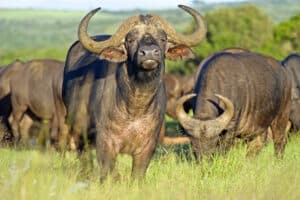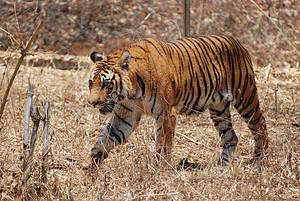Continue reading for our analysis...

In the video below, you see the intensity and brutality of nature in action. A tiger has decided to turn a boar into a meal and engages in a short chase before taking it down the best way it knows how — via a powerful bite to the neck.
How Do Tigers Kill Their Prey?
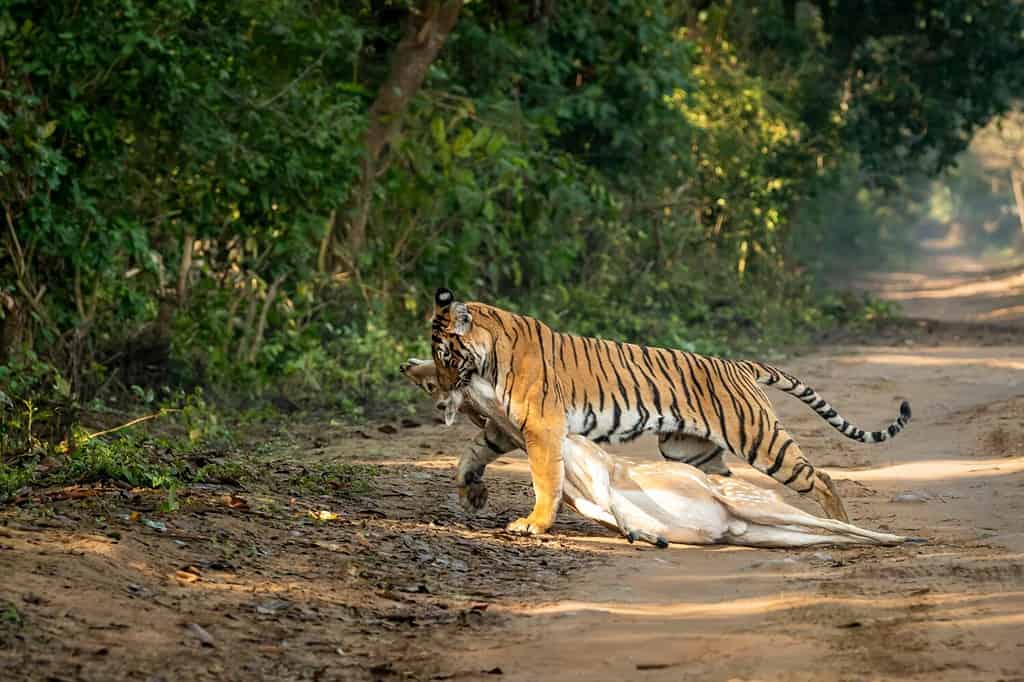
It is perfectly normal for a tiger to kill and eat a large animal like an
antelope
or wild boar.
©Sourabh Bharti/Shutterstock.com
Tigers are the largest of the big cats and can easily overpower their prey. Its jaws are incredibly powerful — once it grabs hold of another animal, the animal doesn’t stand a chance unless the tiger is feeling merciful. A tiger’s preferred place to attack is the neck. They latch on to their prey’s neck and keep steadfast. They use their paws to subdue the animal as well. Their prey usually dies by bleeding out or by suffocating. It doesn’t take long for them to die once the tiger has them in its jaws.
Where Do Tigers and Boars Live?
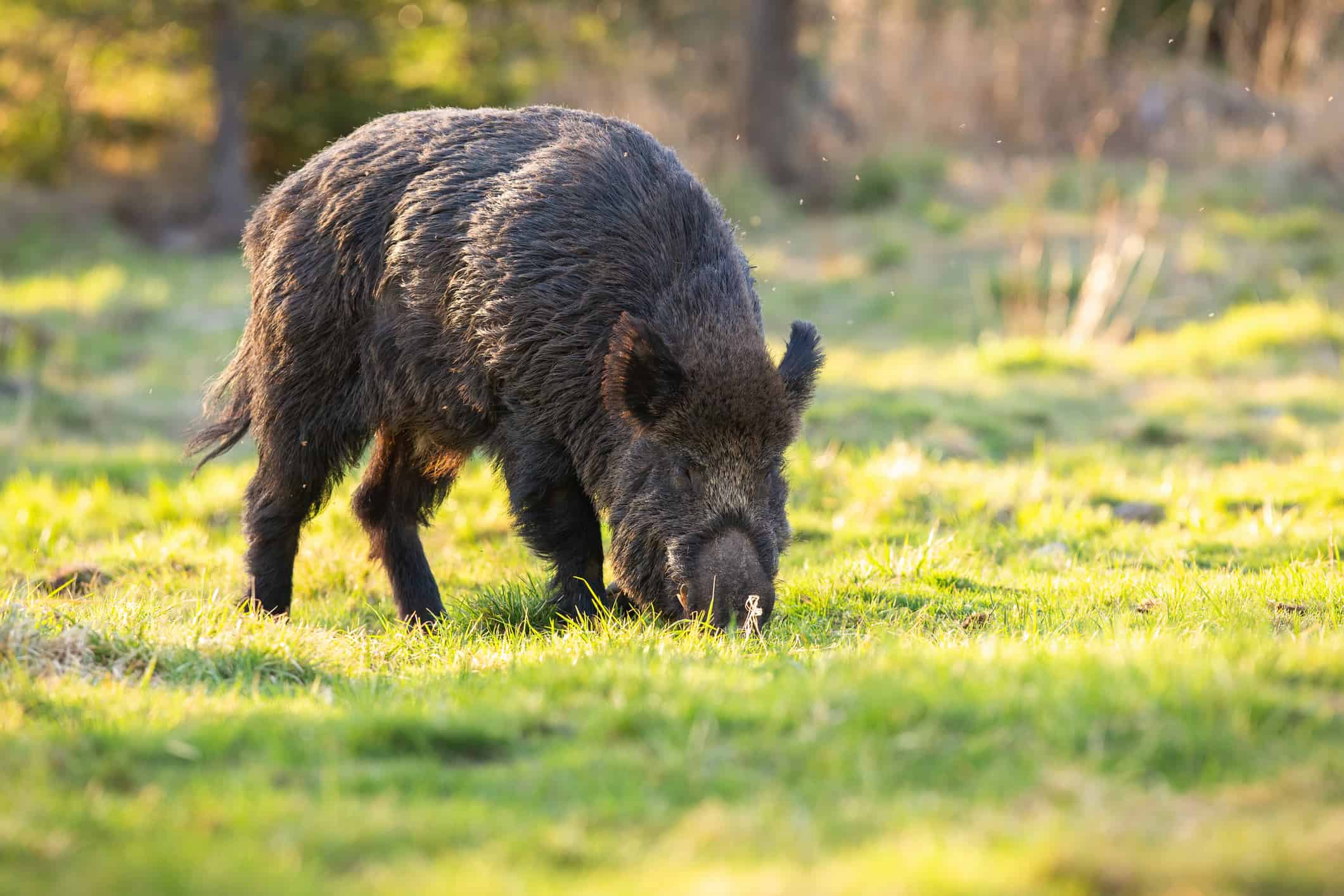
Wild boars inhabit all continents except for Antarctica, but are only native to
Africa
, Europe, and Asia.
©iStock.com/sus scrofa
In the southern part of the Malay Peninsula, tigers share their preferred environment with several prey animals, including deer and wild boars. Typically, tigers inhabit temperate or tropical environments where they thrive. They may also live in grasslands and mangrove swamps. Wild boars inhabit all continents except for Antarctica today, but they’re only native to the northern region of Africa, Europe, and Asia. They inhabit different environments, including wetlands and grasslands, as well as forests. They may even invade farmlands as part of their foraging efforts.
Tiger vs. Boar
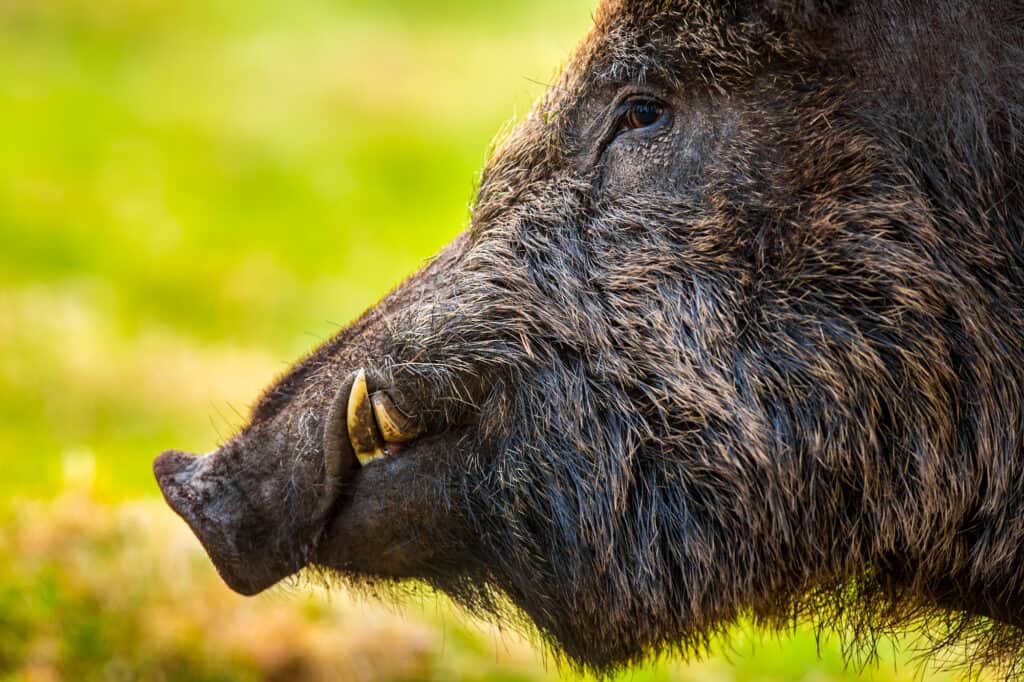
Wild boars will use their tusks to defend themselves, but they are no match for tigers.
©iStock.com/JMrocek
In the clip below, a boar is already growling and squealing loudly as it tries to outrun a menacing tiger. The pursuit lasts only a few seconds as the massive tiger comes up behind it when they cross a dirt road. The footage is a blur at first, but then you see the moment when the tiger catches up to the boar and stretches out its paw to trip it up and take it down. The tiger manages to spin around and find the right angle to bite into it now that it’s in its paws.
The camera is at a distance, and tall grass covers up this exact moment, but the next scene offers a better view. The boar is squealing, making its very last vocalizations before succumbing to death. The tiger is on its side, its jaws tight on the boar’s neck, simply waiting for life to leave it. The squealing continues for a few more moments, and the video cuts again to a zoomed-in view of the tiger’s position over the boar. You can see the boar’s legs kick lightly and go limp as the tiger ensures its kill.
Is It Normal for Tigers to Eat Wild Boar?

The mighty tiger is a carnivore and a fierce hunter.
©Ondrej Prosicky/Shutterstock.com
Tigers are carnivorous animals, and their natural diet consists primarily of large mammals such as deer, wild boar, and antelope. They also occasionally hunt and eat fish and other smaller animals, such as monkeys and birds. Tigers typically hunt alone and stalk their prey until they catch it.
Tigers have a very powerful sense of smell and excellent hearing, which helps them to detect and pursue their prey. They use their sharp claws to capture and kill the animal, and then they eat it.
It is normal for tigers to hunt and eat wild boar. In fact, wild boar is one of their favorite meals. Tigers typically ambush their prey, and then they use their powerful jaws and sharp teeth to tear apart the boar’s flesh. After that, they will eat it.
Tigers generally eat their prey in one sitting, though they may leave some of it for later. They are also known to store food in trees or underground for later consumption.
How Big Are Malayan Tigers?
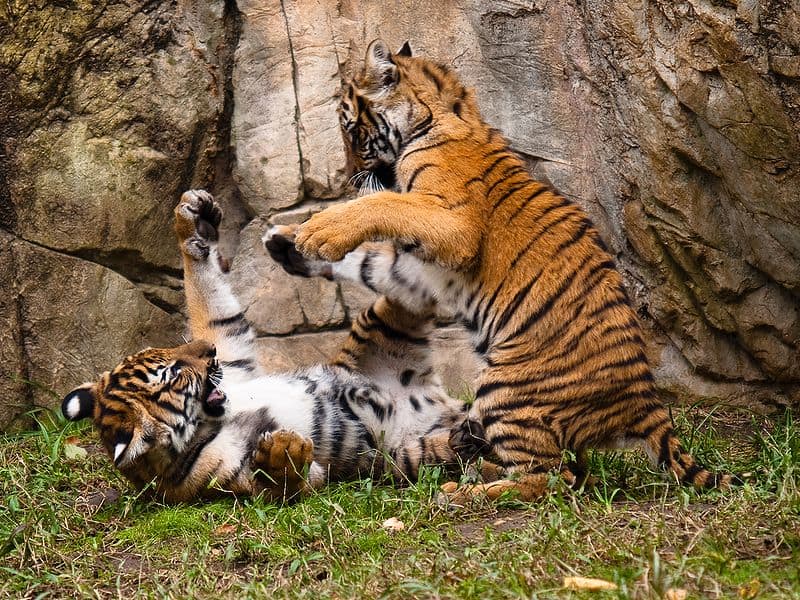
These are one of the smaller subspecies of tigers.
©Malcolm, CC BY-SA 2.0, via Wikimedia Commons – License
The Malayan tiger is a subspecies of Panthera tigris, native to the Malayan peninsula. They are considered one of the smallest subspecies of tigers, typically weighing between 220 to 330 pounds and measuring 7 to 8.5 feet in length, with a height of 31 to 35 inches at the shoulder.
Malayan tigers have distinctive teeth, with an average of 30 teeth in total. Canine teeth can be up to 3 inches in length and have a curved shape that is designed to help them tear flesh. They also have four incisors, two premolars, and six molars on each side of the upper and lower jaw.
Thank you for reading! Have some feedback for us? Contact the AZ Animals editorial team.




